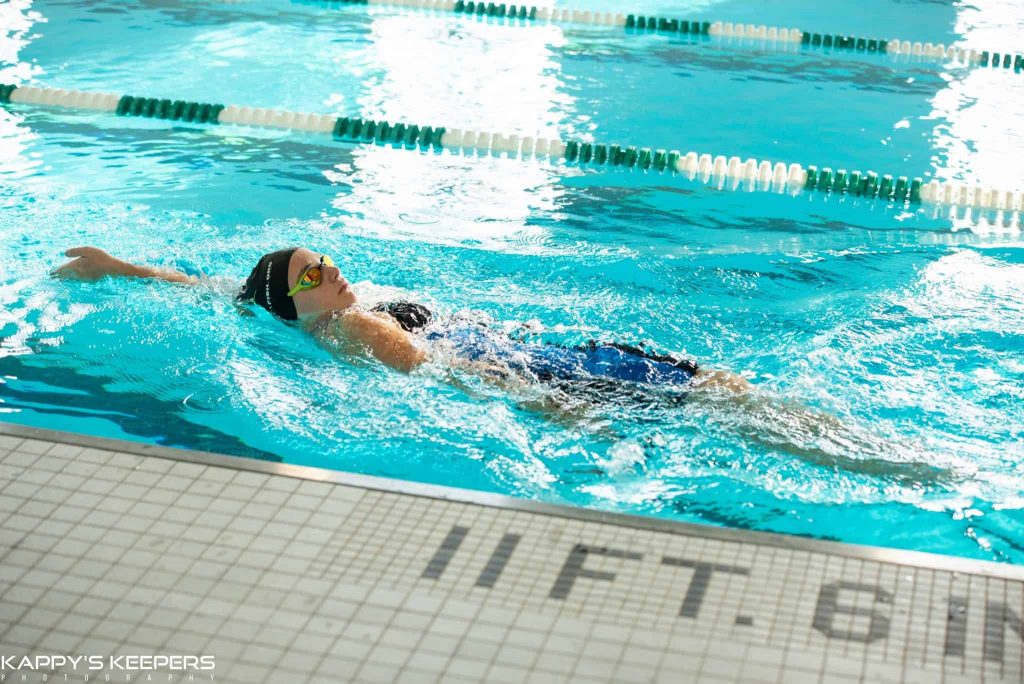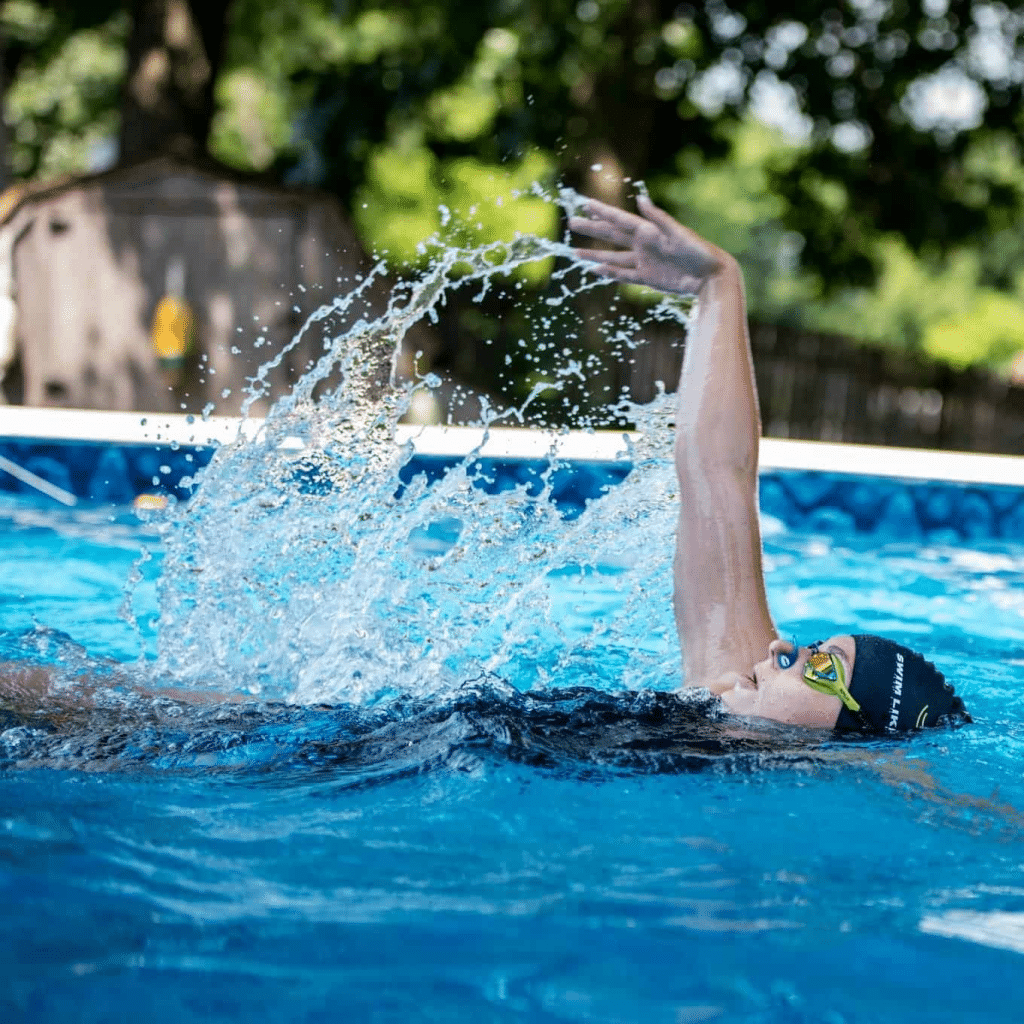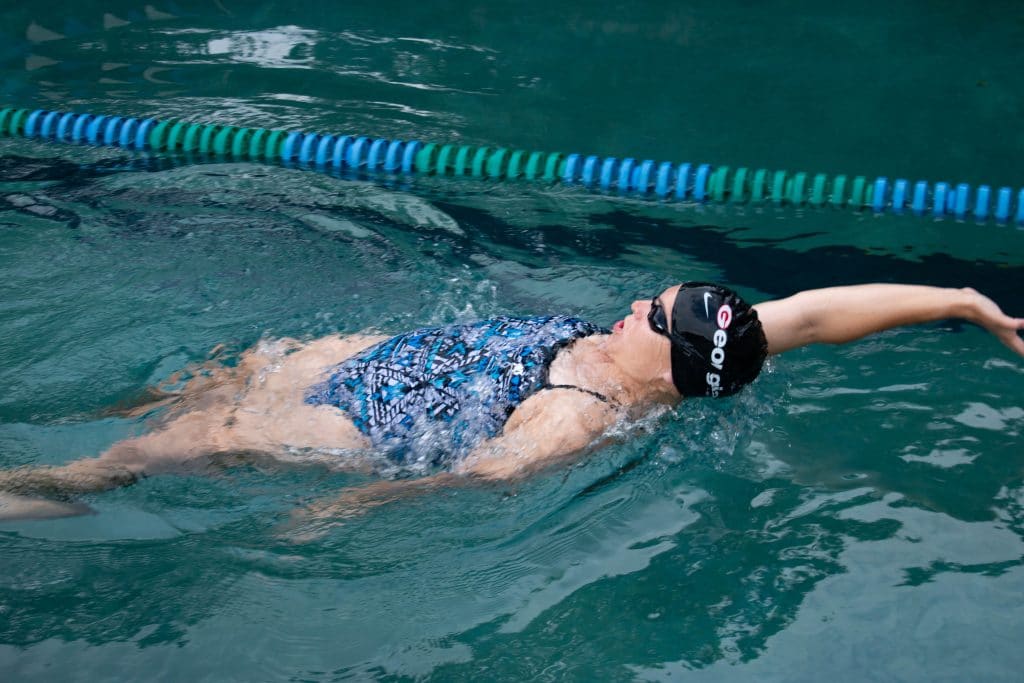Hey SLAF Fam! We are moving right along this week by continuing to answer the question, “What are some of the most common Backstroke mistakes (or really any stroke) you see?” We’ve already talked about the 3 most Common BUTTERFLY Mistakes that we see from swimmers. Today, we’ll be moving into BACKSTROKE!
Let’s Get Started with Common Backstroke Mistakes
Common Backstroke Mistakes: #1 Imbalanced Rotation
What a lot of people don’t realize is that the optimal Rotation in Backstroke is actually slightly MORE than what is optimal in Freestyle. In Backstroke, you’re looking to rotate 40 Degrees on EACH SIDE. Common Backstroke mistakes with rotation include not rotating to the optimal 40 degrees, rotating more than 40 degrees, or rotating a different amount on each side.
I actually find that rotating a different amount on each side is the norm, not the exception. Because most people’s bodies are naturally slightly uneven, a swimmer will likely have a stronger side that “feels easier” to rotate towards. This means that a swimmer is likely to rely on that side for the majority of their propulsion (which reinforces the imbalance). AND, the extra degrees of rotation that occurs in Backstroke makes it difficult for coaches to see even-ness of rotation under the water. Likely a coach wouldn’t be able to diagnose this problem without the aide of underwater cameras.
To avoid falling into this problem, really focus on your rotation as you’re practicing. Have a coach review tapes of you head on. And, learn if you have a “stronger side” that you rely on while swimming. Chances are that your rotation is imbalanced.
Read more about “How Much Backstroke Rotation Is Enough?” HERE.

Common Backstroke Mistakes: #2 Crossing Over at Entry
One of the added difficulties of swimming Backstroke is a swimmer can’t see exactly where their hand is entering the water. The result of this is that a common backstroke mistake I see occurs when a swimmer’s hand enters the water across the midline of the body instead of straight back. It’s an easy mistake to make as the swimmer is completely relying on feel, but luckily it’s one that a coach CAN see from above the water.
This is why it’s incredibly important to get your entry position right as young as possible. After practicing entering at the incorrect spot, it becomes impossible to feel the correct place to enter. That’s when a coach needs to encourage the swimmer to feel like they’re overcorrecting in order to begin entering on the correct side of the body.
Learn about more it HERE.
Principles of Backstroke: The Course

Mistake #3: Incorrect Body Alignment
One of the ways that Backstroke is sneaky is that it’s actually an INCREDIBLE CORE WORKOUT. That’s because incorrect body alignment occurs when the core isn’t connecting the legs and torso. It’s crucial that these two pieces are kept in one line on top of the body. Again, it take a ton of core strength to do this (especially at full speed).
This is a concept we teach to young swimmers by reminding them “hips up high to the sky.” But I find that it’s also helpful to remind swimmers as they get older to “engage their core.” By keeping the core engaged, the swimmer’s legs are sure to stay on top of the water where they’re generating the most power. And, the bodyline stays streamlined.
Watch a video analysis on what this looks like HERE.
Mistake #4: Lack of Continuous Kick
Lack of continuous kick is one of the common Backstroke mistakes that drive me up the wall! The kick, just like with EVERY STROKE, acts as the powerhouse of the stroke. If we’re not kicking, we’re not moving. And again, this is connected to the core. You need strong legs and a strong core to have a killer Backstroke.
Thankfully, this is a mistake that doesn’t need the watchful supervision of a coach. The keys to fixing this mistake are discipline and getting STRONG.
Want to know how the Backstroke Kick is similar to the Freestyle Kick? Read HERE.

Mistake #5: Too Deep of a Pull
Finally, the last common Backstroke mistake I see all the time is when a swimmer goes too deep with their pull. After entering the water with the pinky, a swimmer should then bend at the elbow, and push down towards the thigh with the finish of the stroke having the hand actually face the bottom of the pool (I show how to do this here). The push down is where all of the propulsion comes from in Backstroke.
The problem of having too deep of a pull means that when you get to the portion of the pull where you’re finishing down towards the thigh, you’re not reaching optimal propulsion. This is because a swimmer’s arms aren’t in the optimal position of strength. You want the finish of your pull to be incredibly strong, so that you generate more propulsion. The only way to do that is to get in your very best position to be strong, and going too deep won’t help you with strength.
For a more in depth analysis of the Backstroke Pulling pattern, click HERE.
Until Next Time,
Abbie Fish and the SLAF Fam.

2 Responses
100100100